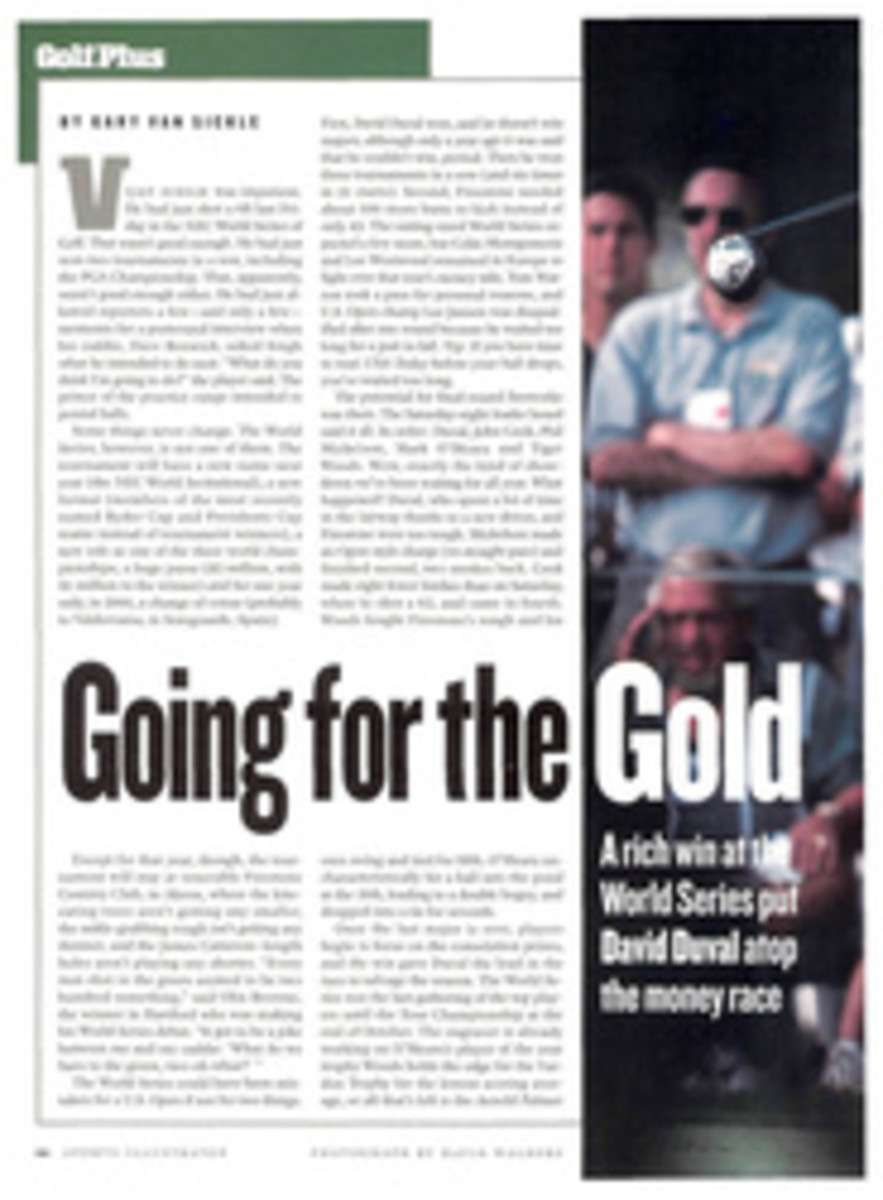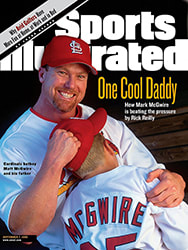
Asterisk Obsession Nearly every holder of the home run record has had his naysayers
There'll always be an asterisk.
If Mark McGwire breaks the season home run record, the naysayers
can whisper--if they can pronounce the word--"androstenedione." The
caveat for Sammy Sosa might be creatine or Wrigley Field. Roger
Maris's detractors pointed to the 162-game season and expansion.
Fact is, the holder of this record has almost always attracted at
least one disclaimer, ever since Levi Meyerle of the Philadelphia
Athletics, Lipman Pike of the Troy (N.Y.) Unions and Fred Treacey
of the Chicago White Stockings set the first recorded season mark
with four home runs each in 1871. Their shortcoming: They played
in the National Association, which isn't considered a true major
league even by its own offspring--the National League. For the
same reason Pike, who broke the record with six homers in '72,
was doomed to anonymity.
Even though Charley Jones of the Boston Red Caps was in the
National League when he hit nine homers in 1879, he didn't have
long to enjoy his mark. Jones was expelled from baseball in 1880
on a charge of "insubordination" (read: salary dispute) and
didn't play major league baseball again until he was signed by
the Cincinnati Red Stockings of the American Association in '83.
The home run mark reached double figures in 1883, when Harry
Stovey hit 14 for the Philadelphia Athletics of the American
Association, an outfit dismissed by the haughty National League
as "the beer and whiskey league." American Association stats are
recognized by The Baseball Encyclopedia, but its history seems
not to count; neither Stovey nor any other star who spent most of
his career in that league is in the Hall of Fame.
In any event Stovey would be quickly forgotten in the wake of the
mayhem shortly to erupt at Chicago's Lake Front Park. The
dimensions of the White Stockings' stadium were so cozily
intimate that in 1883 a ball hit over the rightfield fence was
considered a double. But in 1884 that rule was changed. Though
the rightfield corner remained only 196 feet from the plate and
the rightfield "power alley" extended just 252 feet, a
fence-clearing hit became a homer. Third baseman Ned Williamson
erupted with 27 homers--25 at Lake Front and the other two in the
league's second-smallest stadium, Olympic Park in Buffalo. Three
of Williamson's teammates also broke Stovey's record, and a
fourth fell one short. As a team the White Stockings hit 142
homers; the rest of the National League, 181. The team mark would
stand until 1927; Lake Front Park wouldn't even make it to 1885.
Williamson's record remained on the books but was sneered at
until Babe Ruth amassed his 29 in 1919--a feat criticized at the
time as evidence of a "rabbit ball." Before Ruth arrived, the man
who came closest to breaking Williamson's mark was Buck Freeman.
Freeman, who foreshadowed Ruth as a lefthanded pitcher converted
to an outfielder, blasted 25 homers in his first full season for
the 1899 Washington Nationals of the National League. Perhaps
because a nonrecord performance wasn't deemed worthy of being
debunked, Freeman's effort appears to have been beyond asterisks.
Still, that year he hit more than twice as many homers as any
other major leaguer and outslugged four entire teams. As the
Washington Evening Star noted, "Fans in Washington love to watch
opposing outfielders. Those fielders stand immobile most of the
time, but, when Buck Freeman comes to bat, turn and run about 20
feet toward the fences."
Of caveats concerning the Babe's subsequent record-breaking
seasons, Josh Gibson's 84 homers in 170 games for the 1936
Pittsburgh Crawfords of the Negro leagues and Maris's achievement
37 years ago, little need be said. The lesson of Williamson,
Ruth, Maris and even McGwire and Sosa, is that the beauty of the
baseball statistic isn't its inviolable certitude but rather that
it is merely a launchpad for debates without end.
COLOR ILLUSTRATION HOLY TOLEDO After he hit 25 in 1899, Freeman was a Mud Hen. [Drawing of Buck Freeman]

